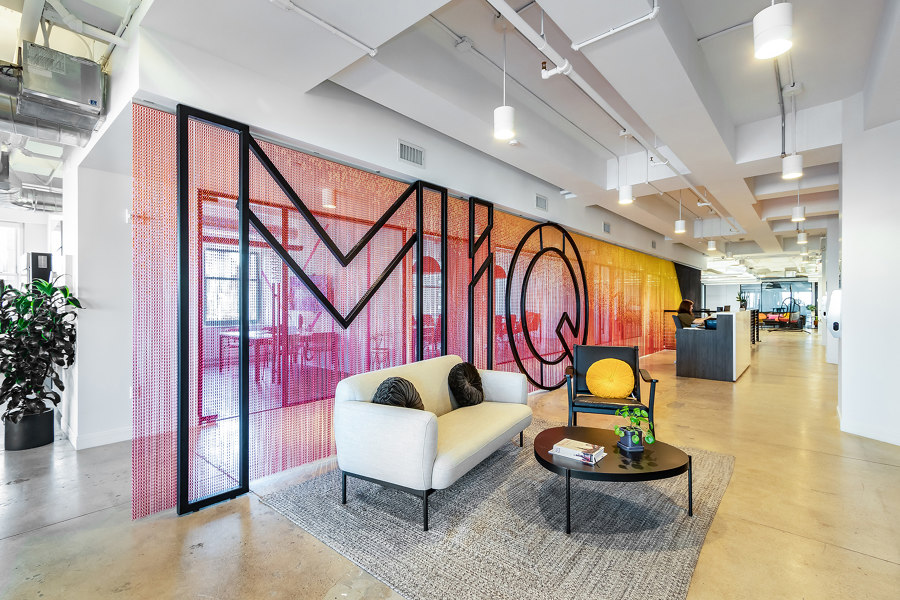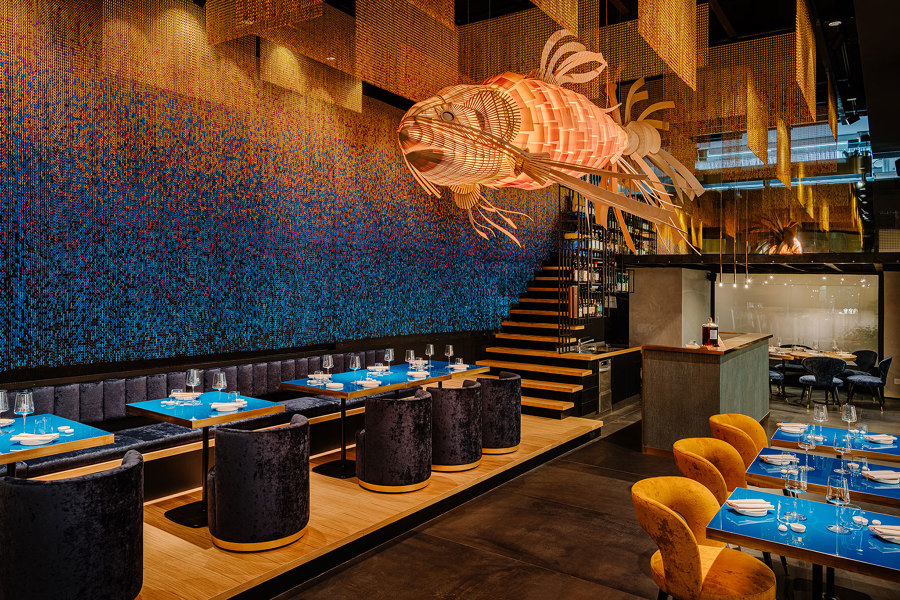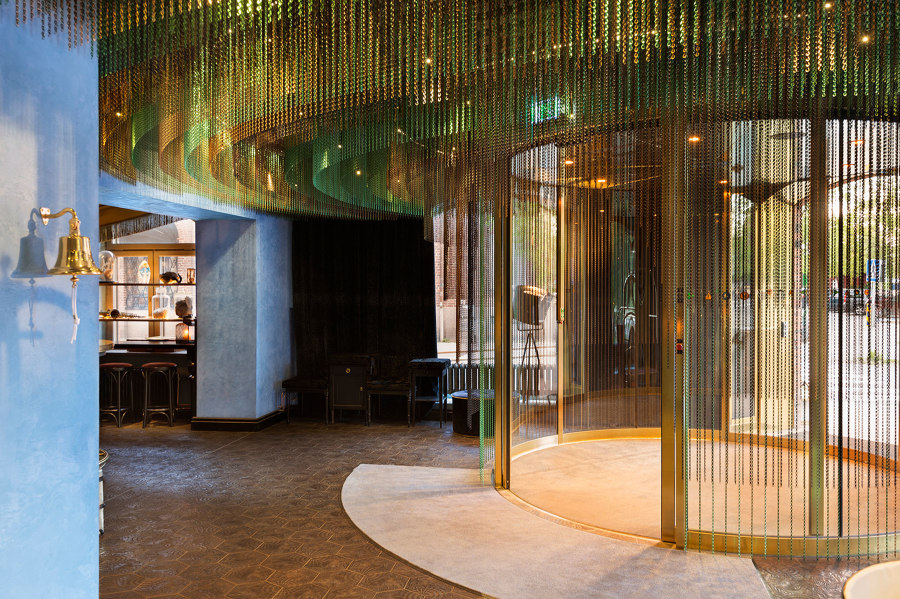Chain reaction: Kriskadecor
Brand story by Dominic Lutyens
Montblanc, Espagne
24.05.21
You don’t necessarily need walls to create engaging spaces – as Spanish manufacturer Kriskadecor proves with its room-defining chain curtains.
Aldgate Tower, London, UK: In this subtle architectural intervention, circular, ceiling-hung curtains echo curved seating booths, signalling different zones
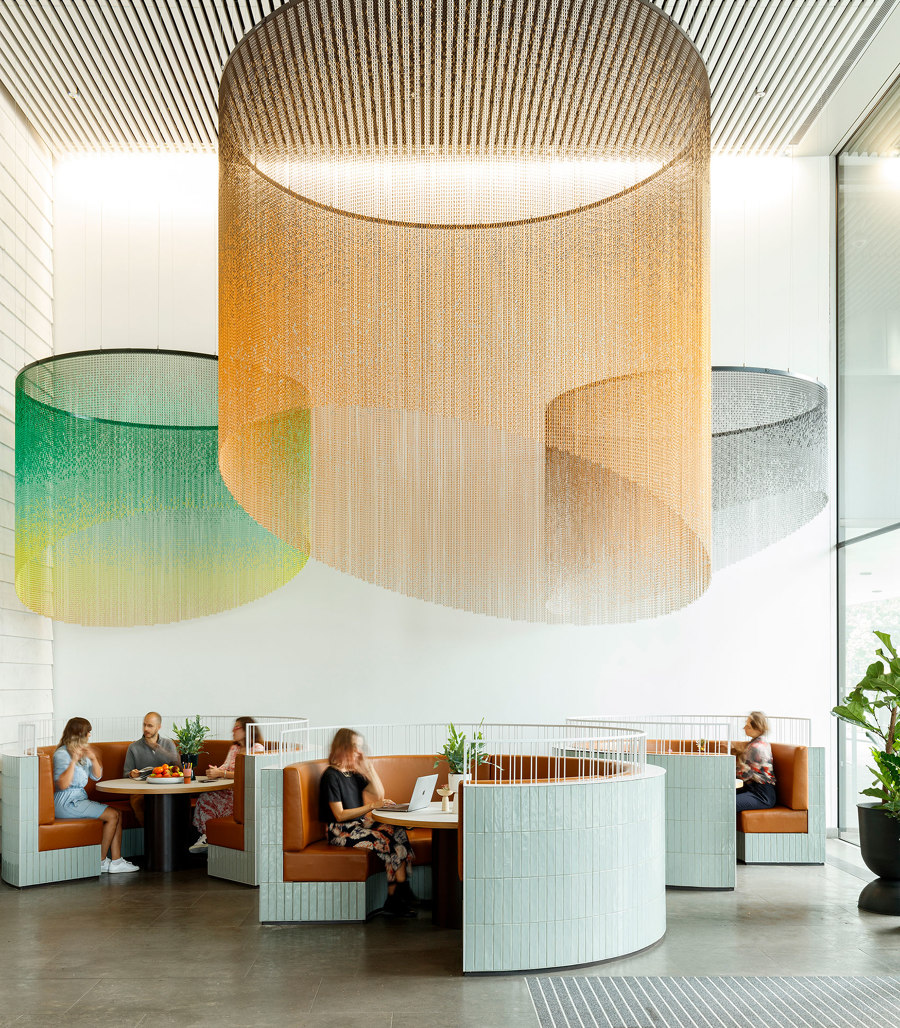
Aldgate Tower, London, UK: In this subtle architectural intervention, circular, ceiling-hung curtains echo curved seating booths, signalling different zones
×The relative merits of open-plan or cellular spaces are hotly debated today. If open-plan spaces were once seen by many as the acme of cool, contemporary living, architects and interior designers today acknowledge the appeal of more compartmentalised layouts – separate rooms with distinct functions.
The debate has been inadvertently fuelled by the pandemic. Working from home and adhering to social distancing in public venues have highlighted the benefits of cellular interiors where it’s possible to carry out different activities, from Zoom calls to yoga workouts, in quiet, private areas.
The versatile chain curtains subdivide spaces at almost any height (top: KI20 Business Centre, Budapest, Hungary). The semi-transparent curtain above, informally partitions two spaces (Pau Casals VIP Lounge, Barcelona Airport)
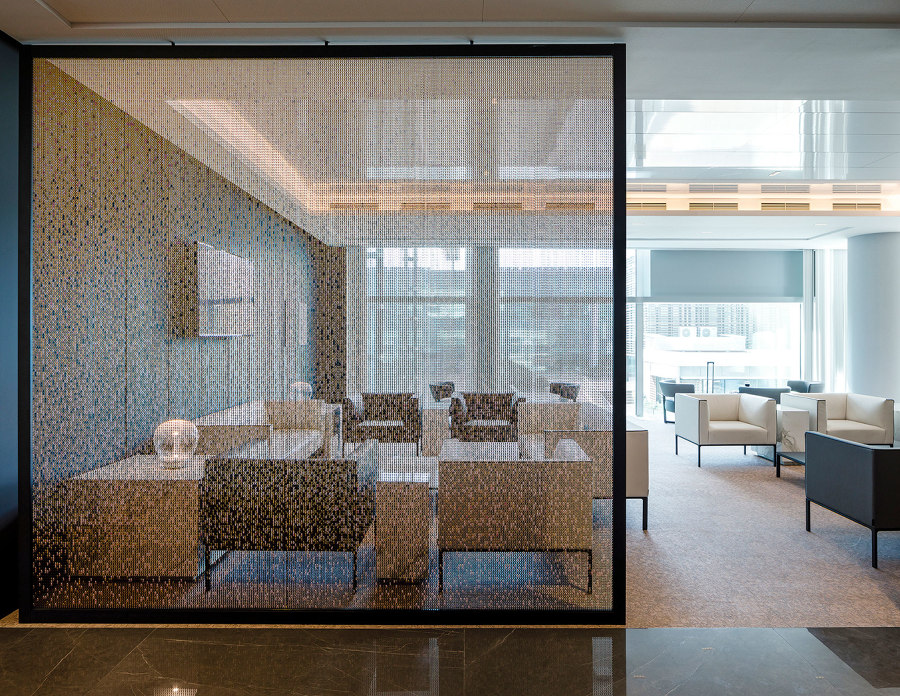
The versatile chain curtains subdivide spaces at almost any height (top: KI20 Business Centre, Budapest, Hungary). The semi-transparent curtain above, informally partitions two spaces (Pau Casals VIP Lounge, Barcelona Airport)
×Not that architects always face a starkly binary choice. Some projects call for flexible room partitions. Historical precedents include Japan’s sliding, wood and paper shinto doors and the storage-cum-display unit of mid-century interiors, still coveted today. An added advantage of these two examples is their transparency, allowing both light to penetrate them and adjoining spaces to feel interconnected.
Spanish brand Kriskadecor has long mastered the art of screening off areas thanks to its versatile chain curtains composed of metal links. In 1926, its founder Josep Maria Sans invented a machine for fabricating these links.
In recent years, we’ve noticed an increase in requests for ceiling features, which we can create in any size, shape and colour,’ says Josep Maria Sans, grandson of the founder and current CEO. ‘We can even simulate rain, generating an enveloping effect
By chance, he discovered a commercial use for them in the 1930s. When a baker mentioned to him that he was sick of flies invading his shop in summer when the door was open to let fresh air in, Sans came up with a metal chain curtain (originally made of iron) that kept them out – and ventilated the shop. Soon after, purveyors of foodstuffs in other Mediterranean countries widely adopted the curtains, too – as did homeowners keen to ban flies from their kitchens.
The curtains come in every colour of the rainbow and graduate from one shade to another (top: MiQ offices, NY, USA). The video reveals the chromatic variety of Kriskadecor’s curtains
In 1957, Sans’ son, Josep Maria Sans Folch, started to fabricate them in lightweight anodised aluminium, making it possible to put the curtains to many other uses. Today, These are almost entirely made of aluminium, a highly recyclable material. The chains’ basic, modular component – a 2mm-long kriska or 1.5mm snina link – meant they could be custom-made to any length and cascade from ceilings without causing structural damage.
The anodising process, which impregnates the metal rather than merely coats it, allowed for the chains to come in a multitude of colours and in satin or gloss finishes.
Today Kriskadecor’s products fulfil a broad range of requirements. The potential to feature them in new ways is constantly explored through collaborations with architects from all over the world. The company has two offices – in Montblanc, near Tarragona in Spain and in Miami, Florida.
Additional layers form a fully immersive effect (top: Kohakinho restaurant, Lugano, Switzerland). Ceiling-hung curtains create decorative patterns that draw the eye upwards (Novotel Dijon Route des Grands Crus, Marsannay-la-Côte, France)
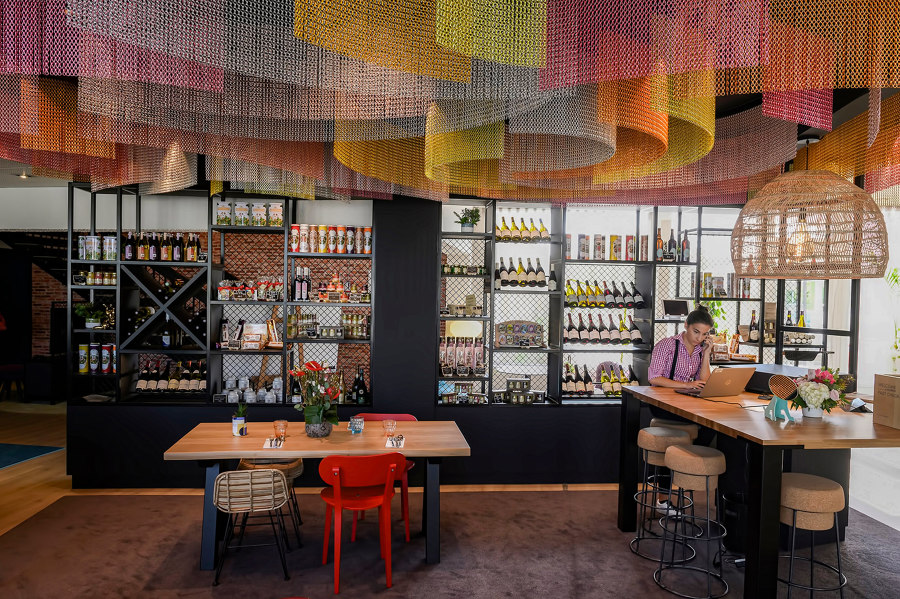
Additional layers form a fully immersive effect (top: Kohakinho restaurant, Lugano, Switzerland). Ceiling-hung curtains create decorative patterns that draw the eye upwards (Novotel Dijon Route des Grands Crus, Marsannay-la-Côte, France)
×Kriskadecor creates bespoke room dividers, wall coverings, lighting features and cladding for residential and public or commercial projects, the latter in the hospitality, retail and corporate sectors. These are often on an arrestingly monumental scale, resulting in immersive environments. Images of all kinds or company logos can be reproduced on the curtains’ surfaces. The brand also offers off-the-peg collections adorned with abstract or figurative motifs.
Architects will welcome the fact that the gaps in the links usually render the curtains semi-transparent, allowing tantalising glimpses of adjacent spaces and air and light to flow between them. This diaphanous effect is enhanced when curtains are hung loosely, creating a gently kinetic effect if they move. Alternatively, the partitions can be fixed to the floor when a more static look is desired.
Architects and interior designers also appreciate the curtains’ metallic sheen which gives them a liquid quality. ‘In recent years, we’ve noticed an increase in requests for ceiling features, which we can create in any size, shape and colour,’ says Josep Maria Sans, grandson of the founder and current CEO. ‘We can even simulate rain, generating an enveloping effect.’
Opulent, ceiling-hung curtains radiating from large entrances create a spectacular look (top: Stora Hotellet, Umeå, Sweden). The dramatic installation at the Aparthotel Playasol Jabeque Soul, Ibiza, Spain, evokes beams of golden light
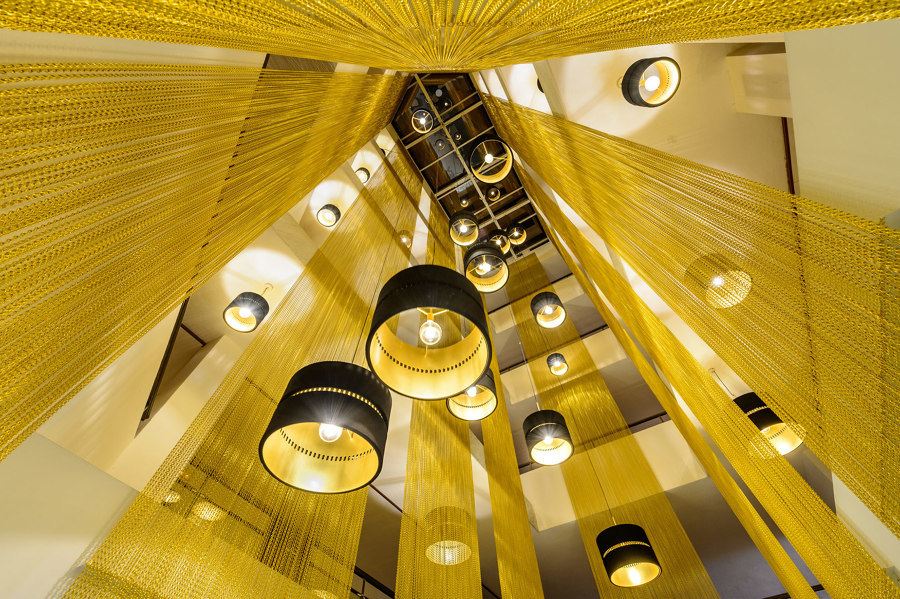
Opulent, ceiling-hung curtains radiating from large entrances create a spectacular look (top: Stora Hotellet, Umeå, Sweden). The dramatic installation at the Aparthotel Playasol Jabeque Soul, Ibiza, Spain, evokes beams of golden light
×Ceiling-mounted lighting features often take the form of serpentine waves, drawing the eye upwards and making rooms look taller. Visual impact aside, they simultaneously conceal unsightly ducts.
Kriskadecor’s malleable partitions, be they colossal or subtle, offer architects freedom to subdivide spaces in countless ways. They offer an alternative to lifeless, solid walls in the form of screens gently veiling views of adjoining spaces to dreamlike, impressionistic effect or, conversely animating them with bold art or graphics.
© Architonic





